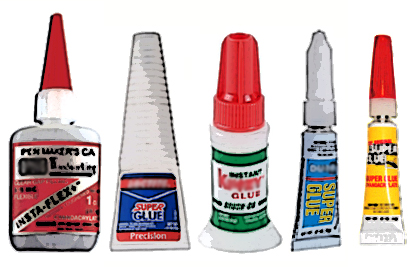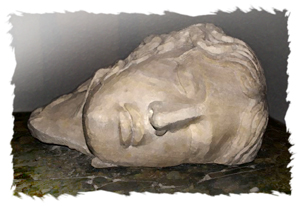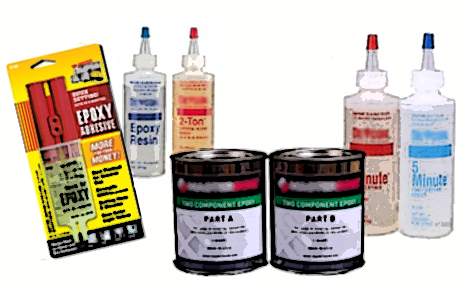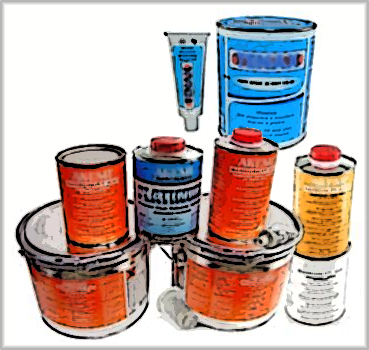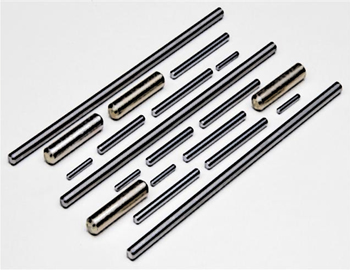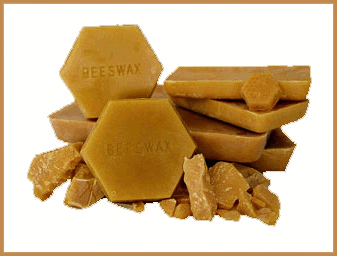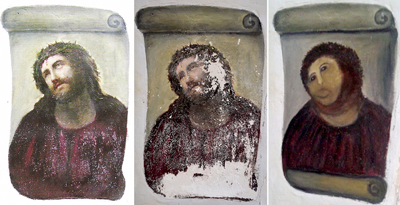 | ||||
 | ||||
 | ||||
The collection of the Museo Palazzo Altemps in Rome is primarily composed of repaired stone sculptures.
Most of the pieces have been documented and known from various collections since medieval times, and the repairs/restorations are a major part of the focus of the museum. The worst of the now-known-to-be incorrect restorations have been removed (after documentation), though in some cases where the repairer/restorer was historically important the [incorrect] restoration was left intact. One such example is a Bernini restoration of an ancient over-life-size Roman statue of Mars. Bernini - with his Mannerist and Baroque sculptor's sensibilities - rather fancifully added a few details such as a baby Cupid playing with a huge war-helmet at Mars' feet.
A MUSEUM OF REPAIRS . . .
 | ||||
 | ||||
 | ||||
 | ||||
 | ||||
 | ||||
 | ||||
home / about the artist / stoneboat series / lipwork series / metaphorical presences / landscapes / multi-element installation pieces / recent works
technical processes / thumbnail galleries / Cortona foundry / Finland stone carving / recommended reading / all in the family / links page
Except for the most minimal of damage all the above-mentioned adhesive-type repairs will require localized recontouring (grinding, filing, sanding) and refinishing (sanding, polishing) of surfaces to match the surrounding areas.
For important or valuable sculptural works this repair work should be done by a reputable conservator skilled in stone restoration so as not to ruin the value of the piece. Contact your local museum or larger commercial art galleries for references.
 | ||||
THE PROCESS: JOINING - REPAIRING BROKEN STONE
Whether due to a pre-existing flaw in the stone, careless handling, or an injudicious application of a tool the process of carving will often cause the stone to break unexpectedly. In a work-in-progress this usually is addressed by redesigning the form to allow for the loss or parting of material. However, sometimes the design cannot be re-worked without great loss of integrity, and rejoining or repairing the piece is necessary. Sometimes a work comes back from an exhibit in a damaged state, necessitating a join or repair to restore it to it's previous appearance.
In these instances adhesives and fillers will need to be used for the restoration work. Though each stone object has unique qualities requiring a discriminating eye and skillful hand in choice of materials and methods for a satisfactory result, this page will provide some general rules-of-thumb for making repairs.
For repair of very small chips the liquid cyanoacrylate type 'instant' adhesives (Super Glue, Krazy Glue, etc.) are used. Liquid is preferred to the 'gel-type'.
This would only be used in situations where the parts fit tight and close so the surfaces match perfectly together. Metal reinforcing pins would not usually be used with these little chips.
To apply: the stone is assembled and fit together and then the adhesive is applied and allowed to bleed-into the crack - any excess is cleaned-off afterwards with acetone solvent.
Cyanoacrylate adhesives will NOT fill gaps where stone is missing -- for that purpose the polyester or epoxy resins are required.
Except where the repair breaks are very small, the repaired joint is always reinforced with a metal (brass, stainless steel, aluminum) pin inserted in holes drilled into the two halves for greater mechanical strength so as to lesson the likelihood of catastrophic adhesive failure.
www.dondougan.com
DON DOUGAN
Several different adhesives or glues can be used depending on the type of damage to be repaired.
Epoxy is the adhesive with the greatest bonding strength, but it tends to yellow, darken, and discolor with time and exposure to ultraviolet light so it is used where the repair will not be visible. Epoxies are usually two parts - resin and hardener - in a 50/50 mix.
ADHESIVE FILLERS
MECHANICAL REINFORCEMENT
SMALL CHIPS
 | ||||
OTHER MATERIALS,
OTHER ADHESIVES
CAVEATS - WARNINGS!
Sometimes other materials need to be adhered to stone. Epoxy is almost always an excellent choice for adhering differing materials, but there are times when for one reason or another another type of adhesive might be preferred.
One example of this might be in joining small parts to the visible surfaces of the stone where the parts need not be permanently attached and may need to be removed at a later time.
This situation would suggest the use of a silicone rubber adhesive, also marketed as caulking material.
Urethane adhesives (such as Gorilla Glue) are another type of adhesive which works in joining dissimilar materials. However, they are employed only where appearance is not an issue, where there are minor gaps to be filled, and where there are proportionately large surface-area to mass ratios. This type of adhesive expands into a frothy yellow foam as it sets and cures, which means it is very messy and needs to be sanded/cut-back after cure is complete.
Though silicone is not as strong as other adhesive choices, it is available in a transparent grade (easily tinted with dry pigments). It will fill gaps to a certain degree, is flexible, non-staining, and can later be removed without too much trouble from even the most delicate of non-porous materials. Silicone can also be used on some porous materials, though preliminary tests should be done to see if it is suitable for specific applications. Small amounts can be applied with something such as a toothpick, and if too much is applied the excess should be allowed to cure and sliced away with an extremely sharp razor blade.
 | ||||
Traditionally the restorer has one more trick-up-his-sleeve: wax.
Tinted waxes have been used to disguise multitudes of sins, and many look-down on the use of wax as a sin itself. Where the finisher in years past had to rely on natural beeswax mixed with various additives for adhering and filling, the finish-restorer of today has a wide variety of products derived from petroleum distillates, with an equally wide variety of properties in areas such as hardness, plasticity, melting points, and color.
STRICTLY FOR LOOKS
Sleeping Erinye
 | ||||
Epoxies
Cyanoacrylates
Polyester resin does not have the bonding strength of epoxy, and is more brittle. It is also not suitable for exterior grade work. However, polyester resin is relatively color-stable over time and to UV light, and it can easily be tinted to color-match the stone. It will take a polish to match the polished/finished surfaces of the stone. These qualities make polyester resin the adhesive filler of choice where the repair is in a highly-visible part of the work. Polyester resins are usually sold in two parts - a large container of resin with a small container of catalyst.
Polyester resins
Silicone adhesive or caulking
 | ||||
one-part Urethane adhesives
Though one's scruples would prevent advocating the replacement of other (more integrated) techniques with that of wax, it may be found that the versatility of wax in filling and coloring cosmetic work will often allow budgets to be met that otherwise would be untenable. Becoming familiar with and employing the techniques of working wax finishes is simply another tool in the user's toolbox - and like any tool it should be used appropriately.
It's cure is activated by small amounts of moisture or dampness on the surfaces into be joined.
A case of suspected vandalism in a church in a northeastern village in Spain has turned out to be one of the worst art restoration projects of all time.
An 80-year-old woman stepped forward to claim responsibility for disfiguring a century-old “ecce homo” fresco of Jesus crowned with thorns, in Santuario de la Misericordia, a Roman Catholic church in Borja, near the city of Zaragoza.
before before restoration after
 | ||||
AN OLDIE BUT A GOODIE . . .
An old practice employed by workers in alabaster was to use plaster as an adhesive and filler when joining large broad surfaces of alabaster carvings to the alabaster base. Since the plaster is a product of alabaster processing it works very nicely and is just slightly weaker than the stone itself.
